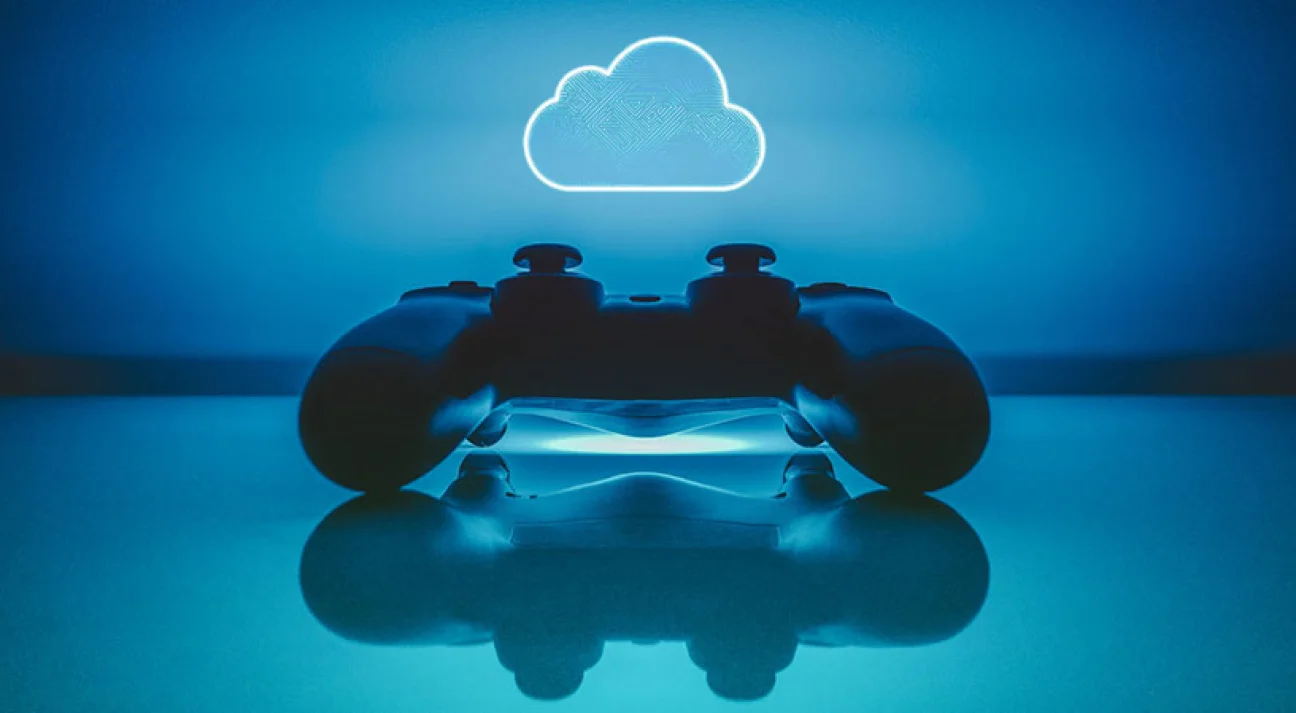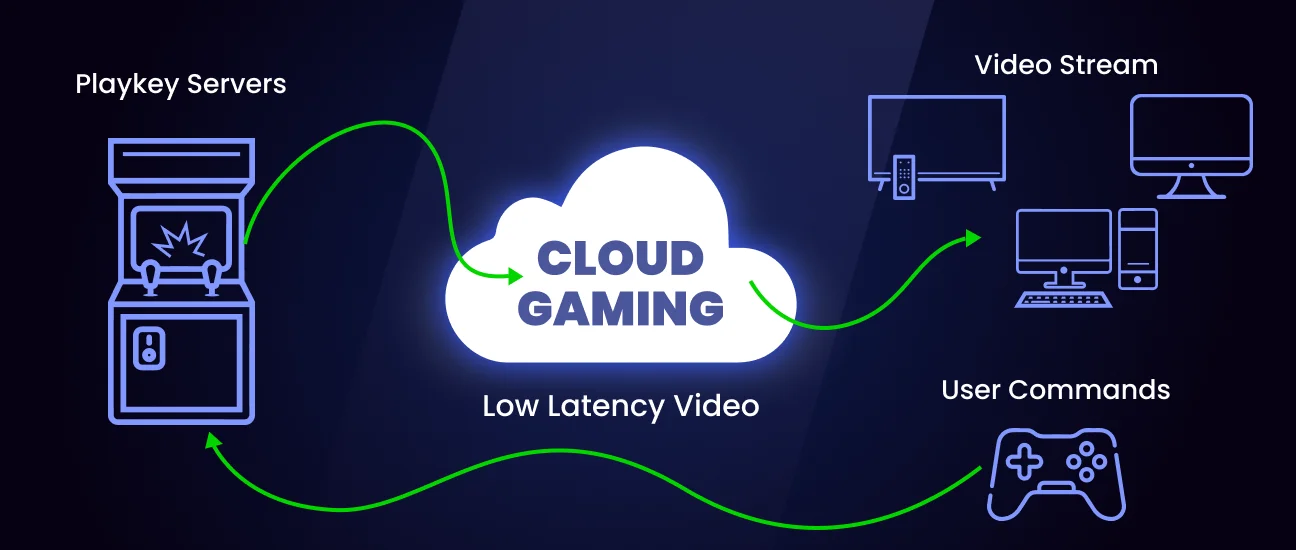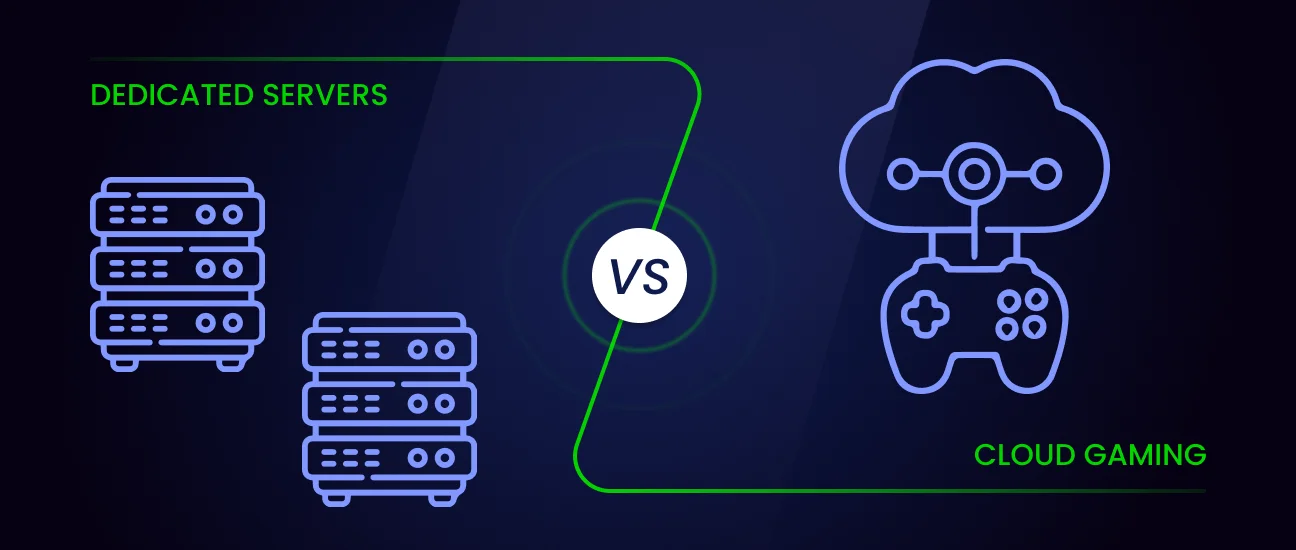
Cloud Gaming VS Traditional Gaming: What Sets Them Apart?
Traditional gaming is like having a gaming buddy right in your living room. You get a game console or a computer, put the disc in, and start playing. You are off to save the day or conquer the virtual world. Everything is happening right there in your hands, and you’re the center of your gaming story.
On the flip side, imagine having a technology like cloud gaming that does all the heavy lifting for you. No need for a super fancy console or PC. Cloud gaming lets you play on gadgets like laptops and phones. It’s like carrying your favorite games in your pocket without putting any effort. But what exactly is cloud gaming, and how does it differ from the gaming experiences you’ve played before and loved?

If you find yourself scratching your head at these terms, then don’t worry! We are here to help you! Our blog on cloud games vs traditional games will tell you the difference between and give you insights into upcoming cloud gaming trends that you need to know to spice up your gaming experience.
What is Cloud Gaming?
Cloud gaming is a type of gaming technology that allows users to play video games without requiring a dedicated gaming console or powerful gaming PC. Instead, the game is processed and executed on remote servers in data centers, and the video and audio are streamed to the player’s device over the internet.
It means they can play high-quality, graphic-intensive games on various devices like laptops, smartphones, and smart TVs with internet connection. Statista predicts that the anticipated global market revenue for cloud gaming may achieve US$6.91 billion by the year 2024. The growth is projected to exhibit a compound annual growth rate (CAGR) of 33.59% from 2024 to 2028.
Pros and Cons of Cloud Gaming
Cloud games are a wide and varied category with different technologies attached to its back. It has its advantages and disadvantages to delve into. Here are some important ones:
Pros
- Support remote gameplay on various devices without asking for high-end gaming hardware
- Provides instant access to games without time-consuming installations or downloads
- Eliminates the need for expensive gaming consoles and powerful PCs
- Keeps games updated with the latest advancements time and again
- Leverage powerful servers for visually stunning gaming experiences and multiplayer features
Cons
- Demands a stable and high-speed internet connection; users with slower connections may experience slow speed or more loading
- Subscription fees can differ depending on the type of game and infrastructure, adding to the expenses
- A few popular titles may be unavailable due to licensing or exclusivity agreements
- Audio and video quality depend on data quality and speed
- Complete dependency on third-party services providing cloud storage and maintenance solutions
Pros and Cons of Traditional Gaming
Traditional games have been a part of the industry for decades. They are the frontiers and the sole reason behind the growth the gaming industry has attained. However, they also come up with silver linings that can’t be ignored. Below written are the advantages and disadvantages you need to know before investing.
Pros
- Allows for offline play, making it suitable for areas with limited or no internet access
- Doesn’t rely on a constant internet connection, reducing concerns about lag or interruptions
- Doesn’t involve ongoing subscription fees for access to game libraries
- There are no restrictions on access or playtime
- Complete control over infrastructure without any dependency on third-parties
Cons
- Lower-quality graphics and sound effects
- Expensive initial costs for gaming consoles or high-end PCs
- Traditional gaming setups are less portable, restricting gameplay to specific locations
- Require manual updates, which can be time-consuming and may impact the gaming experience
- Access to games may be limited if physical copies are not available easily
- Games require manual updates, impacting gameplay
Exploring the Differences Between Cloud and Traditional Games
Cloud games vs traditional games comparison extend to various aspects, impacting how users engage with and enjoy gaming experiences. Here are key distinctions:
Underlying Technology
Cloud games are built using third-party server architecture where the game runs on remote servers, and the user’s device is responsible for rendering and input. The architecture demands a different approach to development, catering to server-side processing and data transfer requirements.
Hence, developers optimize server environments, minimize latency issues, and develop robust backend infrastructure, including powerful servers, load balancing, and network optimization to support a large user base accessing games remotely.

In traditional games, developers optimize the game for specific configurations and operating systems. They manage resources, including CPU, GPU, and users’ device memory, to ensure optimal performance and create platform-specific versions in some cases to support cross-platform gameplay.
Gaming Infrastructure
Cloud gaming transfers processing and storage burdens to remote servers and allows them to handle computational demands. In this scenario, the user’s device acts as a display and input mechanism. The gaming infrastructure involves high-performing servers to ensure seamless gameplay. Moreover, the gaming experience relies on efficient data compression, transmission, and rendering.
On the other hand, traditional gaming infrastructure relies on the capabilities of individual devices, like gaming consoles, PCs, and handheld devices. Users also need high-performing equipment, such as graphics cards, CPU, and RAM.
Accessibility and Convenience
Cloud games support cross-platform game development and eliminate the need for lengthy installations and updates on users’ devices. It enables instant play, allowing users to pick and enjoy games on different devices. Progress is synchronized across platforms, providing a consistent gaming experience.
In traditional games, users need to download, install, update, manage, and store games on the device. The process is time-consuming and challenging for users to continue their game seamlessly across different platforms. However, they can play offline, sitting on their sofa with their friends, irrespective of internet bandwidth speed.
Performance and Graphics
Cloud games have high-end graphics and sound effects that contribute to amazing performance, making the game more entertaining. However, there are limited options for graphics customization options as settings are often optimized on the server side. Users may have less control over individual graphical parameters.
Meanwhile, the graphics quality in traditional games is dependent on the GPU and graphical settings. Players can customize settings for higher resolutions, textures, and effects. Users can typically achieve high and consistent frame rates on powerful local hardware and enjoy smooth and fluid gameplay.
Game Library and Content
Cloud gaming operates on a subscription model, providing users access to a library of games as long as they maintain an active subscription. Users do not own individual copies but have the flexibility to play a variety of titles.
Contrary to this, users own individual copies of traditional games, either in physical form (discs) or digital downloads. Access to the game is tied to the ownership of that specific copy.
Future Trends
Future game development trends in cloud gaming may involve the expansion of edge computing infrastructure and cross-platform game development. There will be an increase in the integration of AR, VR, AI, and machine learning algorithms for personalized gaming experiences, adaptive difficulty levels, and content recommendations tailored to individual preferences.
Dissimilarly, the traditional gaming industry may put more effort into unifying gaming experiences across different platforms and devices. Developers will focus on optimizing hardware and software to further reduce delays. The industry may witness experimentation with streaming services for specific titles or features.
Also read: Retro Games vs. Modern Games: What Has Changed Over the Years?
Final Thoughts
Cloud games vs traditional games comparison is like picking different paths in a big adventure. Cloud gaming lets you play on any device without heavy hardware and devices. It’s all about quick access and playing together with people or yourself, irrespective of location.
Conversely, in traditional gaming, the treasure chest is filled with physical games and a powerful gaming machine. You get to feel and own your games, like having a special collection. Whether you go for the cloud or stick with tradition, gaming is all about having fun and exploring new worlds.
However, if you look at the investment perspective, then both categories are doing amazing in terms of generating revenues. But you need to choose a reliable game development company to make the investment and launch your cloud or traditional game.

Why Choose 300Mind for Game Development?
300Mind is a reliable game development studio driven by a commitment to excellence, innovation, and a passion for creating extraordinary gaming experiences. We are a team of skilled game developers, creative designers, and industry experts who bring a wealth of expertise to every project.
We pride ourselves on pushing boundaries, leveraging cutting-edge technologies, and staying ahead of industry trends. At 300Mind, we foster a collaborative environment that values creativity and embraces challenges, delivering games that not only meet but exceed expectations.
FAQs About Cloud and Traditional Gaming
Cloud gaming setup leverages remote servers to process and render video games. While playing, players give commands, and the cloud setup sends these instructions to servers. Later, servers process the game logic, execute the given commands, and generate desired video and audio outputs in the game.
Playstations released earlier than the invention do not support cloud gaming. However, there are newly released playstations that allow users to stream a vast library of games directly to their PlayStation consoles without the need for physical game discs or extensive downloads.
Best picks are subjective to individual choice. However, some titles have achieved iconic status within the gaming community. These games include Pac-Man, Space Invaders, Super Mario Bros, The Legend of Zelda, Final Fantasy VII, Pokemon, Doom and Quake, etc.
Cloud games are not individually developed to run on clouds. Instead, existing and upcoming games are transferred to cloud servers and access is granted to players. You can play famous games like Fortnite, Red Dead Redemption, Fallout 4, Rocket League, Jax and Daxter, Cyberpunk 2077, Hitman 3, etc.








